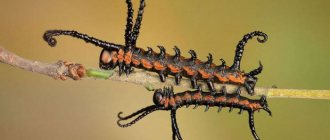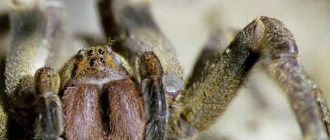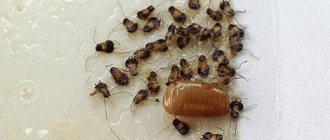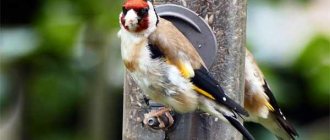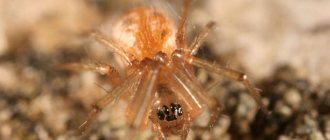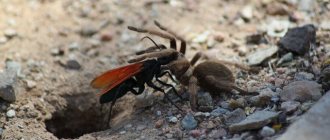Origin of the species and description
Photo: Hercules beetle
Hercules is a coleopterous insect. It belongs to a very large family of lamellaridae. Today it numbers more than thirty thousand species and is replenished every year. Representatives of this species are widespread throughout the globe. The rhinoceros beetle, as it is often called, belongs to the subfamily of hollow beetles.
This subfamily has a striking distinctive feature - growths on the pronotum and head. For this reason, it is difficult to confuse such insects with anyone else. Due to specific growths, Hercules can reach seventeen centimeters in length.
Video: Hercules beetle
The Hercules beetle, among all insects, is famous for its incredible strength. It can carry and lift various objects whose weight is 850 times the weight of the insect itself. Hercules surprises with its size no less than with its strength. The male can reach seventeen centimeters, the female is smaller - about eighty millimeters.
During flight, the insect's wings open as much as twenty centimeters. Hercules can also be called a record holder in terms of weight. The weight of an adult can reach one hundred and eleven grams. This is a record figure among representatives of the lamellar species. Only the Goliath beetle can come close to this indicator. Very rarely a goliath weighs more than one hundred grams.
Interesting facts about mosquitoes
- Carefully examining ancient finds, archaeologists have come to the conclusion that mosquitoes existed back in the era of dinosaurs. More than 170 million years ago, bloodsuckers began not only to appear, but also to actively develop. This was facilitated by large quantities of green plants, a warm climate and high humidity. They ate only pollen and nectar from plants. Over the course of evolution, females switched to blood to ensure healthier offspring.
- If a mosquito is hungry, its weight barely reaches 3 grams. In one bite, a female mosquito can extract up to 5 ml of blood. Once saturated, the mass of the insect increases two to three times. Blood is digested within two days.
- The ability of mosquitoes to adapt to various survival conditions can be called unique. Even if the female does not find a victim to drink blood, she will still give birth to offspring, albeit not so large.
- Few people know, but in the mosquito's proboscis there are microscopic jaws that look like blades. They cut the victim's flesh. The insect inserts its proboscis into the resulting hole.
- To get enough blood, the female needs about five minutes. After that, she will calmly fly away.
- If a person is attacked by thousands of mosquitoes at the same time, he can lose half of his blood in a short time. Anemia can cause death.
- Mosquitoes sleep every two hours. They simply sit on the grass, wall or other surface and sit without moving. However, at the slightest vibration in the air they wake up. In winter, insects fall into a state of suspended animation, hiding in secluded places.
- The female can fly about two kilometers without stopping. Moreover, its speed is 3 km per hour. Given the characteristics of the insect's body, it is capable of rising to a fairly large height, of course, if the wind allows.
- When flying, a mosquito flaps its wings at a speed of more than 1000 beats per second.
- To attract a male, the female performs a kind of dance in the air.
- Special suction cups on the legs allow the mosquito to firmly adhere to any surface.
- Activity increases many times during the full moon.
- Mosquitoes have infrared vision, which allows them to move in the dark without any problems.
- Experts say that if mosquitoes completely disappear from the entire planet, this could cause a global catastrophe. In one of the Canadian cities there is even a monument to the mosquito.
Appearance and features
Photo: Hercules beetle Red Book
In terms of external qualities, the Hercules beetle is considered quite terrifying. It has impressive weight, large dimensions, and black horns. The upper horn is large and serrated, the lower one is smaller. The large horn is slightly rounded and directed forward.
The size of the upper horn will determine the size of the rhinoceros beetle itself. The size of an adult is directly dependent on the quantity and quality of nutrients consumed.
In this case, the nutrients supplied during the pupal and larval stages play a role. During development, one larva can reach a size of eleven centimeters. The power of Hercules is highly valued among fans of animal fights. People often organize exhibition fights between scorpions, lobsters, and rhinoceros beetles. The latter often emerge victorious.
In addition to weight and dimensions, Hercules has other external features:
- beetles are divided into males and females. Females are always much smaller in size than males;
- Sexual differences are easy to determine not only by the size of the insect. The colors also give them away. Males have a black head, horns, and a set of forewings that can be brown or various shades of green. Females are always brown-black;
- According to recent discoveries, the Hercules beetle can change its color depending on its habitat. The color of the shell can be used to assess the level of humidity in the area.
Where does the Hercules beetle live?
Photo: Hercules beetle
The most favorite places for Hercules beetles are tropical and subtropical forests. Today, a large population of this insect can be found in South America, Venezuela, Brazil, Bolivia, Panama, and Mexico. Also, many individuals live on islands located in the Caribbean Sea. Beetles are found in smaller numbers in Colombia, Ecuador, and Peru. Small settlements have also been seen in other countries with a pronounced tropical climate and a large number of forests with high humidity.
Despite the prevalence of the beetle in the tropics, individual individuals live in many countries around the world in domestic conditions. Today, purchasing such a pet for yourself is not a problem. There are many specialized online sites and stores on the Internet that offer both larvae and adult beetles. However, creating the necessary conditions for Hercules to live is quite difficult.
It is important to choose a container that is suitable in size, ensure a high temperature and a suitable level of humidity in it. The optimal temperature range is considered to be between 20 and 25 degrees. Humidity should be at least seventy percent. It is also important to take care of the beetle getting food in a timely manner and providing enough space for climbing.
Spider tarantula
If ordinary spiders cause you not only hostility, but also an inexplicable feeling of fear, then the size of the tarantula can literally plunge you into horror. This huge, terrible beast has a toxic poison, but even despite all the dangers of tarantulas, they are often kept as pets. Everyone has heard about a spider called Tarantula. This spider does not catch flies and other insects with nets made of webs. Simply because he cannot weave them. He tracks his prey from hiding places, which he himself digs in the sand. If you look at him from the outside, you can call him very cute. Before you get such a spider at home, you need to thoroughly study the information about it. The reading will be long, and the video about tarantulas will be interesting. This article contains the most current and complete information about tarantulas. Enjoy reading!
It’s worth starting with the fact that tarantulas are one of the most dangerous types of spiders and are poisonous, but unlike animals and insects, tarantula poison is not particularly dangerous for people, although its bite cannot be called pleasant. As mentioned above, tarantulas are often confused with another type of spider - tarantulas, but there are a number of differences by which the identity can be determined.
Firstly, tarantulas are much smaller than tarantulas, and secondly, the chelicerae of tarantulas move towards each other, while in tarantulas they move in parallel, so it’s quite difficult to confuse them! In some countries, the tarantula is called "tarantula", which also confuses people interested in this species of arthropod.
Externally, the tarantula is very cute. Its body is covered with thick short fur, which makes it very pleasant to the touch. On the head, along the edges, there are two fangs. He has eight limbs, which, by the way, have small claws. But he doesn’t release them often; they are needed for a good grip on the owner’s hand or the tree, if we speak in natural conditions. Oddly enough, the females are several times larger than the males. Also, females can live more than 25 years, while the life expectancy of males is no more than two years, but males have more developed limbs.
Separately, it is worth mentioning the structure of the eyes, which allow the tarantula to perform a 360-degree view. They are excellent hunters and are able to detect prey at a long distance; their sense of smell is as developed as their eyesight! The length of their bodies ranges from 2 to 10 centimeters, their legs up to 30 centimeters, and the average weight of female tarantulas is about 90-100 grams.
Quite an interesting story, from which the very name of the spider “tarantula” appeared. This was back in Italy during the Renaissance. Spiders lived in large numbers in cities, and as a result of their bites, people experienced severe convulsions. Although there is an opinion that they occurred for another reason, the largest number of bites were recorded in Taranto. So the city residents gave it a name that became very popular and many immediately understand what kind of formidable monster they are talking about when they mention a tarantula.
This species has about 221 subspecies, and the most famous is the Apulian tarantula, about which there were many superstitions in the Middle Ages. People believed that the bite was capable of causing madness and had many diseases and viruses that were transmitted through the poison, but in fact this was not the case.
There are several types of tarantulas and all of them are poisonous. Their chelicerae contain poison, with the help of which they not only attack the victim, but also defend themselves from enemies, which also exists, but will be written about them below. There are several main colors of tarantulas, but the most common are black, gray and brown representatives of the species, although exotic representatives are also found.
Females are especially dangerous in the spring. It is at this time that the toxicity of the poison increases. But a bite is certainly not enough to kill a person or large animal. The bite can be compared to that of an aspen. The bite site may also swell and appear red. It goes away on its own, no treatment is required. The poison can only be dangerous for allergy sufferers, in which case it is necessary to consult a doctor.
Not only are they a hard-working species, but like all spiders, tarantulas like warm or temperate climates, but not cold. In warm countries, owners of houses and apartments sometimes discover this species, but most often they prefer to stay in burrows underground. The depth of the hole on average reaches 0.6 meters, but for the future home, tarantulas carefully explore the area and then begin to dig a hole. They apply cobwebs to most of the walls of their home, which, using vibrations, helps them assess the situation outside.
Tarantulas also have a wintering period, during which they dive into the ground up to one meter, and the entrance is blocked with small branches and leaves so that uninvited guests do not appear. After wintering, they often lose their burrows and the next season the tarantulas have to build a new home.
Tarantula. Home maintenance and care
Any container that should be twice the size of the spider itself is suitable for a tarantula to live in.
There is no point in looking for a house anymore, since the tarantula will feel very uncomfortable in it. Part of the terrarium is filled with soil mixture for flowers. It can be purchased at any flower shop. The most preferred option is soil for orchids. The spider's home must be securely closed, otherwise it will escape. The temperature should be maintained at 25 degrees. Humidity is also equally important. To maintain it, the soil is sprayed with a spray bottle every few days. Feeding tarantulas in their natural environment
These spiders are predators. Of course, you shouldn’t think that they attack large animals and kill them with their terrible jaws. Their dimensions are, as a rule, small, which is why they do not hunt animals. The tarantula's main diet consists of small insects. Sometimes he can attack large beetles or very small mice and frogs, but this is where his hunting abilities are limited. This spider is unable to defeat prey even slightly larger than itself. By the way, he catches food not far from his native hole. The fact is that the tarantula is extremely poorly oriented: if it moves too far and breaks the web connecting it to the house, it will no longer be able to find its way back - it will have to settle down in a new place.
The popular opinion has become established that representatives of this species, like all arachnids in general, do not need water. However, this is wrong - all tarantulas need water vitally, like any living creature, but they drink very little by human standards. Another question is that most spiders receive water not from the outside, but directly from the body of the caught insect. But this species is still larger than most of its counterparts, and therefore it needs more water - as a rule, it collects droplets from its web or dew from grasses. By the way, pets that are deprived of this opportunity need a drinking bowl and a small container in the terrarium in which your tarantula can bathe.
Lifestyle of tarantulas
Tarantulas live in burrows. As a rule, they pull them out near calm bodies of water. The depth of the mink can reach one and a half meters. The entire entrance and approaches to it are tightly intertwined with cobwebs. The threads are arranged in a special way - their structure facilitates the transmission of vibrations. The spider is sensitive to the vibrations of the web and, by catching them, is able to understand whether prey has been caught in the web or whether it itself is in danger. In fact, these threads are his main connection with the events of the outside world, which is often unfriendly to arachnids. In the cold season, he digs a hole deeper, and to prevent drafts, he reliably covers the entrance with fallen leaves.
Lives alone, and sees its relatives only during the mating season. Males are especially intolerant of each other - when two male spiders collide, a fight is inevitable. They go hunting under the cover of darkness, and prefer to rest during the day. Being heat-loving creatures, they do not live in the north and inhabit mainly steppes and deserts. Reproduction of tarantulas
Mating season occurs at the end of summer. Males are truly tireless in searching for a mate. They are not afraid of the loss of shelter, to which they will no longer be able to return, or even the risk of death. The fact is that the instinct of self-preservation during this period is greatly dulled, and the male is completely focused on the main goal - to find a female and continue the race. In this regard, spiders become so “daring” that they can be seen even during daylight hours. When the tarantula finds its soul mate, it begins a ritual dance - it begins to beat out a rhythm with all its legs, trying to release vibrations that the sensitive spider will catch, and thus attract her attention. Then he does the same with his abdomen. If she agrees to courtship from her partner, then mating begins. It is interesting that almost immediately after the end of sexual intercourse, the tarantula is eager to get away. And the reason is not at all that these are animals devoid of feelings - it’s just that if he were slower, the female would simply eat him. During this period, spiders especially need protein, and they will not disdain to get it in any available way. After mating, the female individual retreats to her burrow to hibernate. By the new spring, she will crawl out of her home to soak up the sun, weave another web especially for eggs and lay them. Their number is impressive - from 300 to 500 pieces.
It is interesting that these creatures do not immediately abandon their offspring at this moment. On the contrary, the female weaves a cocoon in which she places all the eggs and carries it on herself. Then, when the spiders begin to hatch, she will help them get out, but will not throw off the load from herself, but will continue to carry them with her, placing them in several layers. Only after the spiders are able to get their own food will she gradually get rid of them. As a rule, they run away on their own right after they molt for the first time. By the age of two, these creatures reach sexual maturity. On average, their life expectancy is impressive. For particularly lucky individuals, it can be 30 years. On average, this age is ten years. At the same time, there are much more long-livers among females - males are usually given a shorter period.
Natural enemies of tarantulas
Despite the fact that tarantulas are large spiders, they are still smaller than most predators, which means that in nature many animals are able to hunt them. The most ardent hunters are large birds. In some stripes there are even individual species for which the tarantula is the main prey. For example, a tarantula hawk. Even wasps can kill this arachnid. They immobilize the victim with poison, after which they lay eggs in it, and the larvae eat the corpse. Another insect that is not averse to profiting from the steppe spider is the praying mantis. He is unpretentious in food and is ready to hunt anything he can overcome. Tarantulas are often caught under its sharp claws, although the fight between these species is life-or-death with variable outcomes. Nature is ironic. While tarantulas can eat small frogs, large frogs will not refuse to feast on them themselves. The same can be said about lizards. One should not write off the fact that one of the most dangerous enemies of the tarantula is itself. Or rather, his own appearance. The female will not disdain, if the partner does not go away after fertilization, to feast on him, because she needs protein. Males can kill each other without dividing the territory or an individual of the opposite sex. In those moments when food cannot be found, the spider may covet its own offspring. The constant interspecific hostility between spiders and mole crickets does not subside either. The latter constantly tear apart holes with their strong claws and, once they get to the tarantula, begin a mortal fight. If the arachnid is unlucky enough at this moment to be weakened from molting or from constant malnutrition, it itself becomes prey to the insidious insect.
Powerful claw-like paws give mole crickets a great advantage. If, in order to be stung, you need to come very close, then with long claws blows can be delivered relatively from afar. The opponent loses a lot of blood, weakens and becomes defeated. The first days of spring, when they are just emerging from their burrows, are especially unfavorable for tarantulas. After winter they are still sluggish and inactive, which makes it more difficult for them to fight. The bears, it seems, are just waiting for this. Tarantula population
As a rule, these species settle in areas with a warm climate. There are quite a lot of them in steppes and forest-steppes, as well as in deserts. The problem is that the tarantula population has declined quite rapidly over recent decades. True, individual subspecies were able not only to recover, but also to significantly increase their numbers. Wolf spiders are an excellent example of this type of growth. Scientists suggest that this phenomenon is associated with warming and improving climatic conditions.
Tarantula conservation
In their fear of the world of insects and spiders, people do not understand the main thing: they themselves are capable of doing much more harm to the natural world than even the most unattractive representatives of the fauna. For example, tarantulas are essentially devoid of aggression towards larger creatures. They attack and sting only if they are frightened and try to defend themselves in extreme conditions - when their burrow is torn apart or they come into direct contact. If the spider is simply nearby, it will not rush at you and bite you. Unfortunately, many people forget about this and try to crush the tarantula out of fear of it. In addition, the bite of this arthropod is not fatal. The poison is painful, but its effect can be compared with the effect of bee venom. That is, in the absence of an allergic reaction, it does not pose a danger to human health. This coin has two sides. Some people get scared and kill tarantulas on the spot, while others have created an entire business selling spiders. Local residents quickly realized that collectors and hobbyists would buy a spider for a terrarium for good money, and therefore they specially catch them and put them up for sale. Another danger that humans have brought with them is the destruction of natural habitats. Due to the constant expansion of cities, active urbanization, and extensive farming methods, the habitat of tarantulas is invariably narrowing. This also affects species numbers. Add to this the abundance of natural enemies and changing climatic conditions, and it becomes clear why this species teeters on the verge of being rare. To protect tarantulas, it is necessary to record their changing habitats and take the necessary conservation measures.
One of these is the prohibition of making fires and setting fire to dry grass near steppe areas where spider burrows are found. To stop the fishing, awareness-raising events are being carried out for the local population, and fines and punishments are being introduced. In Mexico they went even further and even created separate farms in order to stabilize the number of tarantulas in natural conditions. The indicators are growing, which confirms the efficiency of the enterprise. In the habitat of arthropods, bans are introduced on the use of a list of chemicals for crops and the area for livestock grazing is limited.
South Russian tarantula
Small, but poisonous. Representatives of the species were found not only in the southern part of the Russian Federation, but also in the Ukrainian steppes, and in the Belarusian open spaces, as well as in Asia. The second name is Mizgir. The burrows it can dig are smaller in size than those of large tarantulas. The average depth is approximately half a meter. Mizgir is not very good at breaking up the soil, which is why he loves soft and fertile soil, in which it is quite easy to build a home. Mizgir does not like moisture, which is why spiders settle mainly in semi-deserts, deserts and steppes, where the air is dry. On average, the length of each male is 2.5 cm, and the length of females is 3 cm. They do not like to leave their home during the day: their hole is also an ambush place. Hearing the movements of a potential victim, South Russian tarantulas jump out of cover and attack insects. Mizgir gets out only at night. The lifestyle and reproductive characteristics of Mizgir are exactly the same as those of other tarantulas. As for the bite, it is comparable to the bite of a wasp or bumblebee - the pain is felt only at the point of contact with the spider's jaws. The painful area swells, but the meeting with Mizgir does not carry any more danger. Even after stinging you once, he will hasten to run away.
Feeding a tarantula at home
The tarantula is not fed often. Adults once every two months. And spiders up to three years old once a month. Since the tarantula is a predator and prefers to hunt for its food, insects must be released into the terrarium alive. The most important thing is that the food is not larger than the spider itself. The tarantula is a very voracious creature that can try to eat someone larger than itself. But this usually ends very sadly. The spider's belly may burst and it will die.
Where to buy a tarantula
Spiders are infrequent visitors to pet stores. They can only be found in large stores, most often located in the capitals of our country. However, with the prosperity of the Internet, there are entire networks of online stores specializing in the sale of exotic animals. An example is the Planet Exotics network. Here the buyer is presented with a number of types of tarantulas, among which he can choose a pet of the size and price category that he considers optimal. Depending on the prevalence of the spider and its size, its market value is determined. Small spiders that are not listed in the Red Book can be bought for almost nothing - from 250 rubles. Medium-sized spiders will cost around 800 – 1000 rubles. The most beautiful and largest ones - from 2500 to 7000 rubles. Sometimes advertisements for the sale of tarantulas from breeders or owners appear on Avito. The price is set individually, individual copies cost about seven hundred or more rubles. Recently, the “SALE TARANTULAS” portal was developed, where each species sold is marked with a degree of aggressiveness and a scale of complexity of content. Prices range from 150 to 10,000 rubles.
Interesting facts about tarantulas
1. Doctors in medieval Italy prescribed bitten people to dance the tarantella to recover. They say that most of the tarantula victims followed the recommendations and danced until they lost strength.
2. One of the books about “Harry Potter” talked about the spider Aragor, after which Iran decided to name one of the species of spiders “ Lycosa aragogi”
«.
3. If you are bitten by a representative of this type of spider, you can smear the wound with its blood and the poison will be neutralized. Natural antidote!
4. Tarantulas are excellent at regenerating lost limbs, although it is not recommended to go and check this, because the lost leg will be shorter than the previous one.
5. Female tarantulas are able to cover incredible distances in search of a female, however, when the mating season begins.
What does the Hercules beetle eat?
Photo: Large Hercules beetle
The diet of the rhinoceros beetle consists only of organic materials in the stage of decomposition. Most often, the insect prefers to eat overripe fruits. One such fruit can last an adult for several days. The beetle will suck out nutrients to the last. Sometimes rhinoceros beetles feed on fallen leaves and soft tree bark.
Beetles find most of their food directly on the ground. However, if necessary, they can climb trees and fly from one place to another. The wingspan can reach twenty centimeters, and the insect's legs are quite long and have tenacious claws. All this makes Hercules a wonderful earner.
The search for food may be accompanied by combat skirmishes between adults. Violent clashes often end in death. Powerful horns easily push through shells.
The structure of maggots under a microscope
You can make an independent description of the larva based on the research conducted. Typically, maggots are about 8 mm long. His body is oval-shaped. On one side it is pointed, and on the other it looks flattened. The head is small and narrow, passes into the chest, consisting of three rings connected in series. Next comes the abdomen, which consists of eight rings. The back of the maggot ends with two dark circles: these are the respiratory organs of the larva (or spiracles). Directly below them is the maggot's digestive system.
05.12.2019 3588
Features of character and lifestyle
Photo: Hercules beetle from the Red Book
The lifestyle and behavior of beetles has its own characteristics. Beetles are predominantly nocturnal. During the day they often hide under fallen leaves. These insects spend most of the day in search of food. They slowly move along the ground, choosing suitable fruits and berries for themselves. Sometimes the Hercules beetle climbs a tree to feast on tree sap. He extracts it from cracks formed in the bark of soft tree species.
The character of Hercules can be called militant. Rhinoceros beetles often challenge each other to so-called duels. During calling, insects use the stridulation apparatus. When the duelists discover each other, they immediately rush into battle.
In relation to humans, the Hercules beetle can be called peaceful. He will never attack or cause harm. It is also harmless to vegetable gardens and fields with agricultural crops. Thanks to these qualities, the Hercules beetle is popular among exotic lovers. Many people keep these beetles at home without fear of handling them.
The lifestyle and feeding habits of the rhinoceros beetle bring great benefits to the planet. They are excellent organic recyclers. Insect larvae crush organic matter and pass it through their intestines.
Social structure and reproduction
Photo: Hercules beetle in nature
In the social structure of beetles, the highest level is always occupied by the strongest. Only strong males have the right to continue their kind. For this reason, during the mating period, once peace-loving insects turn into irreconcilable fighters. While courting the females, they actually fight with each other, trying to push through the enemy's shell.
Damage to the opponent's coat is almost half the success in the fight for the female. The battle of competitors most often continues until the last. One of the beetles must retreat or die. Rhinoceros beetles rarely retreat, so most battles end in the death of one of the males. The mating season always occurs during the rainy season in the tropics.
The male who wins the fight begins the process of mating with the female. Females usually lay eggs in slightly rotting wood bark. During their short life, the females of this insect manage to lay no more than a hundred eggs. Each time the female tries to lay as many offspring as possible, because the life expectancy of the strongest beetle is very short - no more than a year. The eggs turn into larvae in about two months. Then they develop in three stages.
Each of them has its own specific duration:
- the first takes about fifty days;
- second – fifty-five days;
- the third is the longest and takes at least four hundred days.
Which household milk separator is better to choose?
Many companies produce separators for the production of cream and butter, but how to choose the right one? When purchasing, you need to pay attention to the material, type, functionality of the device; you should buy equipment only from trusted companies that have proven their worth. A household milk separator must meet sanitary standards, be equipped with a reliable design, and be convenient for use at home even in small spaces. Read more about separators that are presented on the Russian market.
- Beans for weight loss: benefits and recipes
- Haircuts for medium hair with bangs: women's hairstyles with photos
- How long to boil soft-boiled eggs after boiling water. How many minutes do you need to boil quail or chicken eggs?
Milk separator Motor-Sich
Motor Sich is a representative of electric separators for the home, which consume 60 watts. The cost of the devices varies from 3,700 to 5,400 rubles; they are presented in plastic and metal casings. In cheap models, the float chamber is plastic, while the separator for 5,400 rubles is equipped with an aluminum mechanism. The capacity of the bowls is 12 liters. Milk capacity varies from eighty to one hundred liters, so the separator is perfect for a large household. The approximate weight of the devices is 4-6 kilograms.
Household separator Rotor (Altai)
The separator (Altai) is represented by a model for 2,250 rubles - it is an electrical device that can process about 55 liters per hour. The power consumption of the machine is 100 watts. The capacity of the milk receiver is 5.5 liters, weight is 3.5 kilograms. Manufacturers tell you how to use a milk separator in the product description. To begin, pour water into the milk receiver while the electric device accelerates. The acceleration process takes a little over a minute.
Separator Salute
The separator is represented by an electric model for 4,000 rubles, which has a protection system against voltage surges - even with a significant decrease in current, a high-quality machine will be able to continue working. This device has a butter churner function, and adjusting the speed will allow household owners to get skim milk rather than cream. Approximate milk processing per hour is 50 liters, bowl volume is 5.5 liters. The home separator weighs only 3.4 kilograms.
Cream separator Ural-M
The Ural M household cream separator for 3,100 rubles is an electrical device that consumes no more than 100 watts of electricity during operation. The assembly is equipped with a powerful motor that does not make too much noise, is reliable, can work for up to a day without overheating, and does not require changing brushes. The motor has good protection against overloads and voltage surges, which can cause damage to the device. In an hour, farm owners can pass up to 80 liters of milk through a home separator. Bowl volume – 5.5 liters. Weight – 3.5 kilograms.
From the manufacturer Farmer
Home separators for milk processing are represented by two electric models for 3,900 rubles. The maximum amount of dairy products that the devices can pass through is 80 liters. The weight of the equipment does not exceed three kilograms. Both separation models consume about 80 watts of electricity and have 11 plates in a rotating drum, the rotation speed of which is from 13,500 to 14,500 rpm. There is an adjustment of the volumetric ratio of the resulting cream to skim milk.
Natural enemies of the Hercules beetle
Photo: Large Hercules beetle
Like any other insect, the Hercules beetle has enemies. Beetles may consider themselves their main enemy. A large number of adult males die during the mating period, fighting with each other. However, this makes it possible to purify the further genus, because only the strongest representatives of the species reproduce.
The Hercules beetle is hunted by many predatory animals: mammals, rodents, reptiles, bats. They are not afraid of the large size of the insect. However, the rhinoceros beetle is never an easy target. He uses every opportunity to protect himself. The main weapon is a large, powerful horn, strength, tenacious legs, and large wings.
Beetles fly well, which helps them quickly hide from ground enemies. Various parasites, for example, ticks, can also be called enemies of Hercules. However, they do not eat insects. They do harm in a different way. Ticks can damage the beetle's body and significantly undermine its health. This shortens the animal's overall lifespan.
Adults are not as often endangered as defenseless larvae. It is at this stage of development that Hercules most often dies. The larvae become quick and easy prey for ants, large ground beetles, and centipedes. The larvae are also killed by the Scolia wasp. The wasp pierces the body of the larva with its sting and lays its eggs in it.
Population and species status
Photo: Hercules beetle
It is almost impossible to estimate the population of this animal with high accuracy. However, one can definitely say about the status of the species - the species of Hercules beetles is significantly declining. There is only one reason for this reduction - human intervention.
In particular, the population decline is influenced by the following factors:
- Massive deforestation. This is the most pressing problem of our time. By cutting down forests, people deprive Hercules of its essentials - home and food.
- Air and water pollution. This factor affects the reduction in the number of all animals.
- Extermination of Hercules by people. For example, this amazing animal is often captured and sold for big money to collectors. Also in some countries this insect is used in the production of medicine.
Scientists have begun assessing the health of the forest by assessing the rhinoceros beetle population. If there are a lot of insects, this is an excellent indicator indicating the good state of the ecological situation in the forest.

